On July 21, the Seattle Kraken finally added faces to their team, selecting 30 players from around the NHL, including All-Star Jordan Eberle and former Norris Trophy winner Mark Giordano. It was an exciting moment, and many will be watching to see if they can repeat the success of the Vegas Golden Knights, who made the Stanley Cup Final in their inaugural season and have been a playoff powerhouse ever since. While it will be a much tougher road, the Kraken should be well-equipped to push for a playoff spot in 2021-22.
The same couldn’t be said 30 years ago. In 1991-92, the NHL was preparing to add two more teams — the Tampa Bay Lightning and Ottawa Senators — and three more over the next three years. Unlike the Kraken and Golden Knights, the league hadn’t figured out how to prepare their expansion franchises for success. These teams had to work for their place among the best, and very little was done to accommodate them.
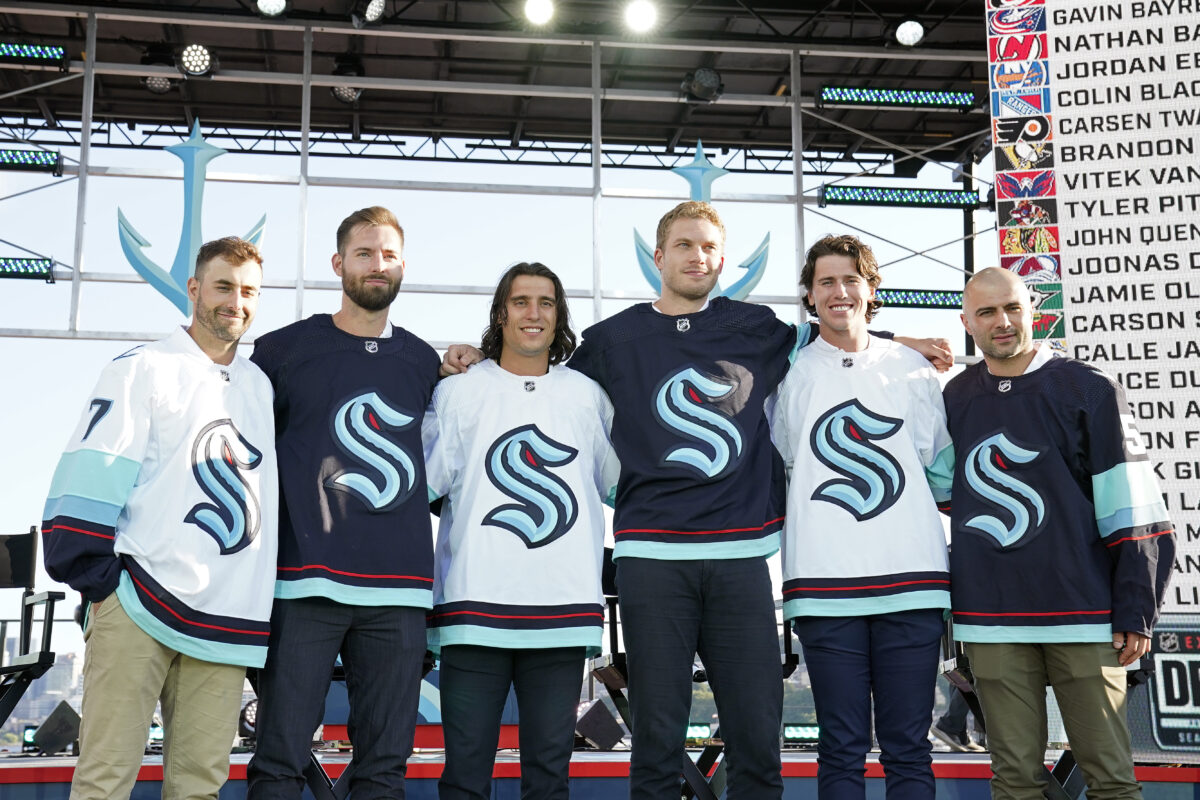
No team fared worse in their inaugural seasons than the Senators. It was a mess from the start. General manager Mel Bridgeman put all his draft plans on a state-of-the-art laptop but forgot to charge the battery before the draft, only to discover there was no place to charge it at the Montreal venue, which forced the rookie GM to work entirely from memory. Three times he sheepishly returned to the podium and apologized for selecting an ineligible player. Sadly, it was a sign of things to come, as the Senators quickly sunk to the bottom of the league and remained there for four seasons.
The Senators’ history is fraught with disappointment, and as the Kraken gear up to hit the ice in a few months, I can’t help wonder if the Sens would have had more success with a better start. At the time, the expansion rules were brutal to navigate and left Ottawa with scraps. What if they were given the same advantages as both Vegas and Seattle? Would they have competed for a playoff spot right out of the gate?
There’s only one way to find out…
The Expansion Rules
To re-do the Senators’ expansion draft, we need to be clear on the rules. In both drafts, first and second-year professionals were exempt from selection, but in 1992, NHL teams were allowed to protect 14 players and two goalies, which left little for the Senators to pick from. That number dropped significantly for 2017 and 2021, with teams either protecting seven forwards, three defencemen, and one goalie, or eight skaters and one goalie. I’ll use my best judgment to determine which players would be protected given those rules. For help, I referenced Mark Parsons and his blog on the 1992 expansion draft, as well as the 1991 NHL Draft and 1993 expansion protection lists, which have a treasure trove of interesting facts.
Because the Senators entered the NHL with the Lightning, NHL teams had to lose two players, but no rule stated that each expansion team had to select just one. Both teams took advantage of this oversight; the Lightning selected both Brian Bradley and Keith Osbourne from the Toronto Maple Leafs, while the Senators took Darren Rumble and Mark Freer from the Philadelphia Flyers. However, since the Kraken and Golden Knights drafted alone, I’ll also select just one player from each team, while also limiting myself to position to create a final roster of 13 forwards (trying to be mindful of centers and wings), six defencemen, and two goalies.
Boston Bruins
Protected: (8/1) Adam Oates, Cam Neely, Vladimir Ruzicka, Steve Leach, Ray Bourque, Glen Wesley, Don Sweeney, Gord Murphy, Andy Moog
Notable Players Available: Dan Berthiaume, Bob Carpenter, Ken Hodge Jr., Jim Weimer, Bob Beers, Bob Sweeney
The Senators select: Bob Sweeney, Center
Led by captain Raymond Bourque and Glen Wesley, the Boston Bruins had one of the best blue lines in 1991-92, and it only got better when they added Gord Murphy from the Philadelphia Flyers that season. With three All-Star defencemen, it seems logical that they would try to protect as many as possible, and therefore, they opted for the eight/one protection model, adding youngster Don Sweeney to the mix. As for forwards, Cam Neely, despite his recent injury, was protected, as were Adam Oates, Vladimir Ruzicka, who led the team with 39 goals, and Steve Leach, who was second with 31.
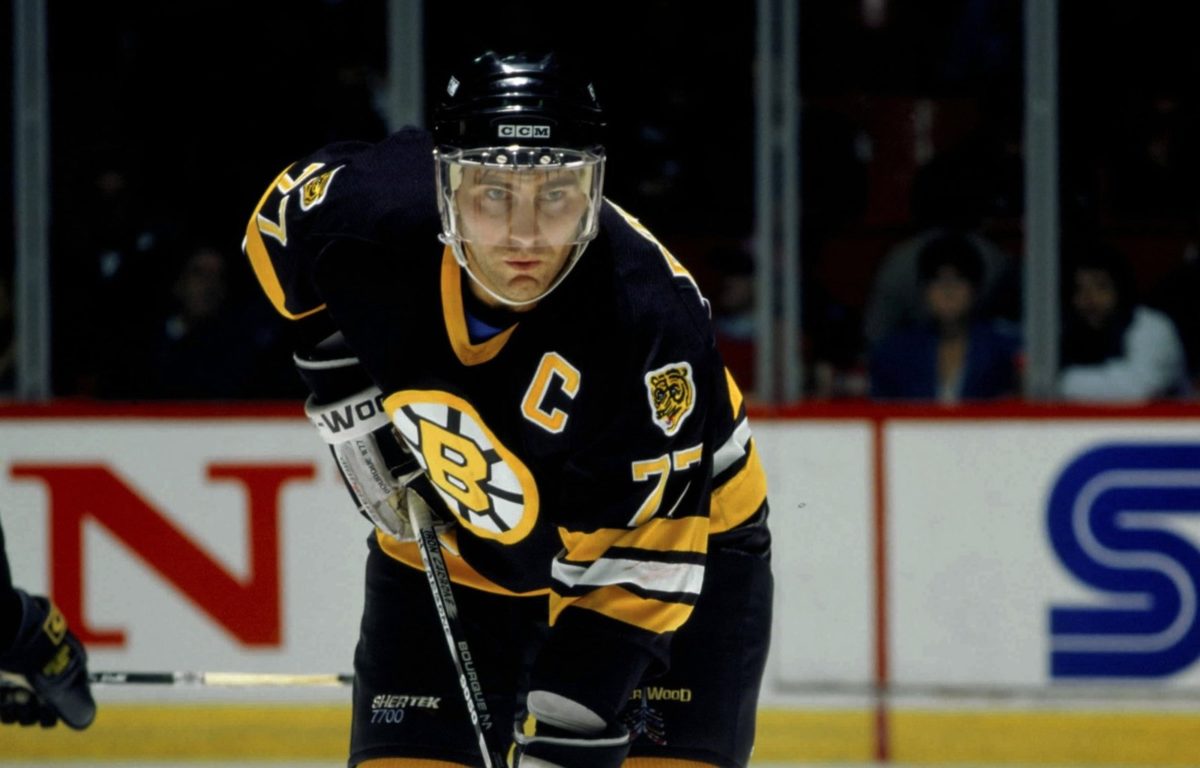
That left several talented forwards for the Senators to chose from, including Bob Carpenter, Dave Reid, and Bob Sweeney. Carpenter was a free agent at the end of the season, so it didn’t make sense to protect him, even though he was the team’s top center. The other two were 27 years old and hadn’t emerged as anything more than depth options. However, Sweeney had reached 40 points three times in his career already, so he seems like a strong first pick for Ottawa.
Buffalo Sabres
Protected: (7/3/1) Dale Hawerchuk, Pat LaFontaine, Dave Andreychuk, Alexander Mogilny, Donald Audette, Rob Ray, Christian Ruutu, Doug Bodger, Petr Svoboda, Ken Sutton, Daren Puppa
Notable Players Available: Clint Malarchuk, Randy Wood, Grant Ledyard, Wayne Presley, Bill Houlder, Bob Corkum
The Senators select: Bill Houlder, Defence
Trades are always a part of expansion drafts, as teams try to shuffle their lineups to avoid losing top assets for nothing. The Buffalo Sabres had one such asset in Christian Ruutu, who they couldn’t find room to protect, so they shipped him off to the Winnipeg Jets in the days leading up to the expansion draft for backup goalie Stephane Beauregard. After the draft, the Jets wanted their goalie back, but the Sabres had already traded away Beauregard to the Chicago Blackhawks for one of their backup goalies. No problem, however, as the Jets simply sent Ruutu to Chicago for Beauregard, and all was back to normal. Well…sort of, because the Blackhawks parted with none other than Dominik Hasek for the Jets’ backup, and the Sabres ended up landing one of the best goalies in NHL history.
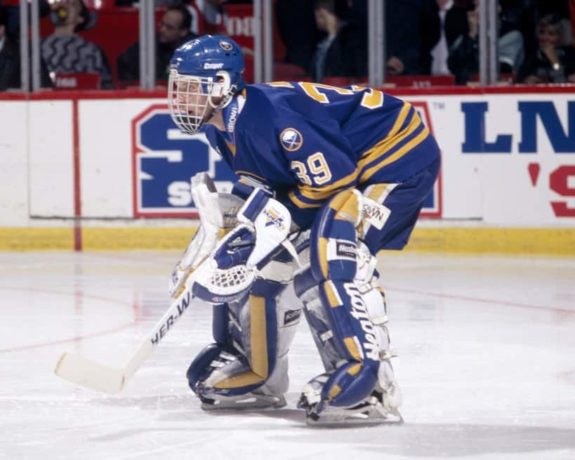
It’s one of the most interesting events to happen due to the 1992 expansion draft, but if the Sabres are forced to abide by stricter rules, do they still manage to land Hasek? That question is far too complex to answer here, but what I can say is that Buffalo would almost certainly protect Ruutu this time around, leaving a few interesting forwards for the Senators to choose from, including Wayne Presley and Randy Wood. But in the end, I went with defenceman Bill Houlder. He spent most of his time in the minors while with the Sabres organization but got his big chance when the Mighty Ducks of Anaheim picked him in the 1993 expansion draft. With a consistent roster spot, he broke out with 39 points and became a reliable 20-30-point defender.
Calgary Flames
Protected: (7/3/1) Gary Roberts, Theoren Fleury, Joe Nieuwendyk, Joel Otto, Sergei Makarov, Gary Leeman, Paul Ranheim, Al MacInnis, Gary Suter, Michel Petit, Mike Vernon
Notable Players Available: Jeff Reese, Tim Hunter, Marc Habscheid, Trent Yawney, Craig Berube, Frank Musil
The Senators select: Craig Berube, Left Wing
The Calgary Flames swung a massive deal during the 1991-92 season, sending Doug Gilmour to the Maple Leafs for Gary Leeman, Michel Petit, Craig Berube, Alexander Godynyuk, and goalie Jeff Reese. It was one of the biggest deals in hockey history, and with the 1992 expansion rules, there was no risk of losing an incoming asset. But with the 2021 rules, the Flames can’t hold on to all of those pieces. Leeman was the biggest part of the return for Calgary, coming off a 51-goal, 95-point season in 1989-90, and so he would likely be the player they protect, along with Petit, a hard-nosed defenseman who could put up 30 points. That leaves Berube as the odd-man-out, who the Senators would be more than happy to select.
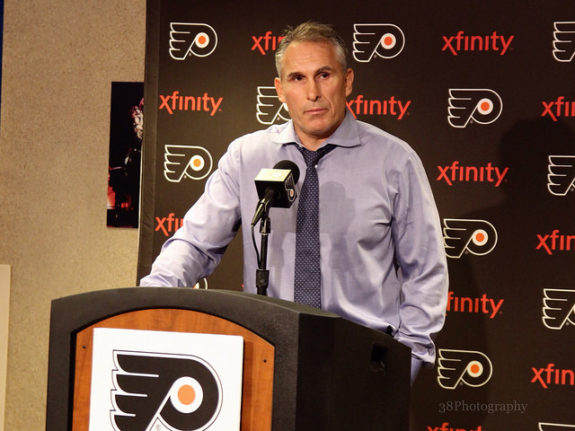
Despite being one of the youngest members of the Gilmour trade, I can’t see how the Flames could hold onto him. There’s no chance he’d replace Gary Roberts, Theoren Fleury, Joe Nieuwendyk, or 1991 Calder Trophy winner Sergei Makarov, and it seems unlikely Calgary would choose the new guy over the fellow tough guy and fan-favourite Joel Otto. That’s just fine for the Senators, who would have loved to add his grit and toughness. He went on to have a fairly successful career, playing until 2003-04 before he retired and switched to coaching. Although he never posted more than 15 points, he regularly earned over 150 penalty minutes and provided leadership and depth on every team he joined.
Chicago Blackhawks
Protected: (7/3/1) Dirk Graham, Steve Larmer, Stephane Matteau, Jeremy Roenick, Brent Sutter, Rob Brown, Brian Noonan, Chris Chelios, Steve Smith, Bryan Marchment, Ed Belfour
Notable Players Available: Jim Waite, Michel Goulet, Stu Grimson, Jocelyn Lemieux, Keith Brown, Mike Peluso
The Senators select: Jocelyn Lemieux, Left Wing
Although the ability to protect two goalies should have made things fairly simple in 1992, the need to expose a goalie with a certain amount of experience put some teams in a tricky situation. That was the case with the Blackhawks, who didn’t have any goalie with NHL experience beyond Ed Belfour and Jim Waite and to fulfill the NHL’s exposure requirement, they would have to expose Dominik Hasek, despite the fact he was just in his second professional season. Thus, to save him from exposure, Chicago called up Ray LeBlanc for one game, which fulfilled their exposure requirements. The Senators obviously passed on the minor-league goalie, and he never played another NHL game.
However, with the rule change that teams can only protect one goalie, the Blackhawks no longer have a tough decision to make and leave former first-round selection Waite exposed. But the Senators have their eyes set on a forward here, and they select 23-year-old Jocelyn Lemieux, a prolific junior scorer with the Laval Titan that had yet to find success in the NHL. It may seem strange that I passed on Michel Goulet, who finished 1991-92 with 22 goals and 63 points, but he was also exposed during the 1992 expansion draft, and neither Ottawa nor Tampa Bay grabbed him. It likely was similar to the Washington Capitals exposing Alex Ovechkin to the Kraken, as he was a pending free agent and was all but guaranteed to re-sign with the Capitals, so I’ll follow suit and pass on the former All-Star.
Detroit Red Wings
Protected: (7/3/1) Steve Yzerman, Bob Probert, Ray Sheppard, Paul Ysebaert, Shawn Burr, Kevin Miller, Jimmy Carson, Brad McCrimmon, Steve Chiasson, Yves Racine, Tim Cheveldae
Notable Players Available: Vincent Riendeau, Brent Fedyk, Gerard Gallant, Sheldon Kennedy
The Senators select: Gerard Gallant, Left Wing
The Red Wings entered the 1992 expansion draft in great shape, as Sergei Fedorov, Vlad Konstantinov, Mike Sillinger, Keith Primeau, Vyacheslav Kozlov, and Martin Lapointe were all either in their first or second professional season. Add in their protected list, and the Senators have once again very little to choose from. Sheldon Kennedy is somewhat intriguing, as the winger was just 22 years old, but he ended up having an underwhelming career, so I’ll pass on him. Instead, I’ll go for another future NHL coach in Gerard Gallant, who simply finds himself on the outside of an incredibly deep roster.
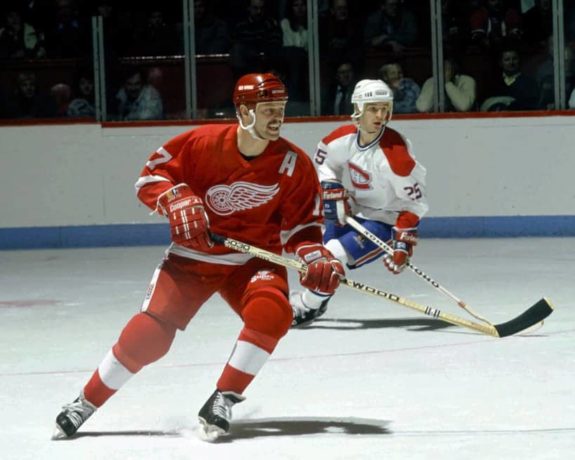
Gallant was one of the Red Wings’ best players in the late 1980s, but by 1992, he was no longer a top-line option. However, he was still a respected leader, and at 27 years old, he had a few good years left in him. He finished the 1991-92 season with 36 points in 69 games, plus 187 penalty minutes. With the Senators, he would become one of the faces of the team, potentially even their first captain, while making an already tough roster even tougher.
Edmonton Oilers
Protected: (7/3/1) Vincent Damphousse, Joe Murphy, Scott Mellanby, Esa Tikkanen, Martin Gelinas, Bernie Nicholls, Craig Simpson, Kevin Lowe, Dave Manson, Luke Richardson, Bill Ranford
Notable Players Available: Norm Maciver, Ron Tugnutt, Petr Klima, Kelly Buchberger, Shaun Van Allen
The Senators select: Kelly Buchberger, Right Wing
One of the few players who immediately found success in Ottawa was defenseman Norm Maciver, who put up 63 points to lead the Senators in scoring. However, he was never picked in the expansion draft; instead, he was a waiver claim early in the season. So that begs the question — would the Oilers have protected him if given the 2021 rules? I’m betting not — the franchise had a solid group of young forwards and some promising defenders in Dave Manson and 1987 first-round pick Luke Richardson, along with captain Kevin Lowe.
With that assumption, I’m going to bend the rules a little bit and say that the Senators still pass on Maciver and the Oilers waive him, allowing Ottawa to add him after the draft. That allows them to add a strong winger, and I’m going with Kelly Buchberger. While Petr Klima is an intriguing option, as the Czech star had a career-high 68 points in 1990-91, Buchberger is two years younger and had a breakout season in 1991-92 with 44 points in 79 games. While not earth-shattering, it begs the question as to whether he could repeat that with an increased role, which he would certainly have on this Senators roster.
Hartford Whalers
Protected: (8/1) John Cullen, Pat Verbeek, Murray Craven, Andrew Cassels, Steve Konroyd, Zarley Zalapski, Adam Burt, Randy Ladouceur, Kay Whitmore
Notable Players Available: Peter Sidorkiewicz, Frank Pietrangelo, Brad Shaw, James Black, Jim McKenzie, Terry Yake
The Senators select: Terry Yake, Center
Goalies were the first players off the board in 1992, and for good reason — a strong goalie can give a weak team some legs to stand on. However, the Senators opted for Peter Sidorkiewicz, the Hartford Whalers’ backup, who had never put up a save percentage above 0.892. While goaltending standards were different in that era, it was still a weak choice. But it was one of the best available at the time, so Ottawa bit the bullet. He spent just one season with the Senators, posting a 0.856 save percentage while winning just eight games.
Thankfully, several more intriguing goalies end up exposed in our re-do, so the Senators can pass on Sidorkiewicz here and instead go for young center Terry Yake, who had some big AHL seasons under his belt but little NHL experience. He was originally exposed in 1992, but on top of Sidorkiewicz, the Senators also selected Blair Atcheynum, who was also a prolific scorer in junior but had even less NHL experience. Strangely enough, Yake was exposed again in 1993 despite putting up a 53-point season. Finally, the Might Ducks took him off the Whalers’ hands, and he followed up his breakout with a 52-point season. You can’t win games without scoring goals (unless you use the neutral zone trap), so the Senators will add another center.
Los Angeles Kings
Protected: (7/3/1) Wayne Gretzky, Luc Robitaille, Tony Granato, Tomas Sandstrom, Jari Kurri, Corey Millen, Mike Donnelly, Marty McSorley, Paul Coffey, Rob Blake, Kelly Hrudey
Notable Players Available: Dave Taylor, Bob Kudelski, John McIntyre, Charlie Huddy
The Senators select: Charlie Huddy, Defense
Rob Blake just misses the cutoff for exemption after playing four games in 1989-90, so the Kings will have to protect him. That likely forces out veteran Charlie Huddy, who I think the Senators could take a chance on. Yes, he’s 32 years old and far from the player who put up 44 points in 1988-89 and helped the Oilers win five Stanley Cups, but he’s an Ontario native and would bring some name recognition and leadership to the young franchise. Huddy went on to play until 1996-97, finishing his career with over 1000 games played and over 400 career points.
Minnesota North Stars
Protected: (7/3/1) Mike Modano, Dave Gagner, Ulf Dahlen, Shane Churla, Todd Elik, Brian Bellows, Mark Janssens, Mark Tinordi, Jim Johnson, Craig Ludwig, Jon Casey
Notable Players Available: Darcy Wakaluk, David Shaw, Neal Broten, Allen Pedersen, Chris Dahlquist, Gaeton Duchesne
The Senators select: Neal Broten, Center
The Minnesota North Stars attempted to clean shop in 1992, exposing former all-stars Brian Propp, Rob Ramage, and Neal Broten, plus veterans Bobby Smith and Basil McRae, in hopes of freeing up some roster spots for an influx of youth that could restart their franchise. The Lightning took the bait, grabbing both McRae and Ramage, but neither fared well with the expansion team and were both moved mid-season. Both Propp and Smith were done within two seasons, but the same can’t be said for Broten, who played for another five seasons and recorded a 52-point season in 1993-94 and scored 19 points in 20 playoff games with the Devils en route to their first Stanley Cup in 1995.
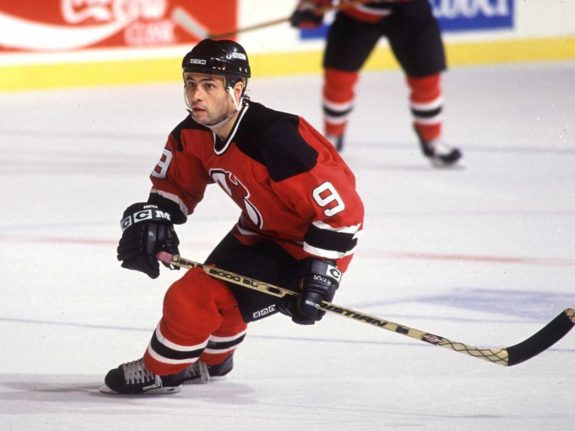
With that in mind, the Senators select Broten, who adds another veteran presence to the franchise. So far, this team is not looking as strong as I thought, and adding a leader who can guide the young, talented prospects Ottawa will add in the next several seasons through the draft may help them get on there quickly. But there’s not a lot of great options beyond Broten, either. Gaeton Duchesne was a decent, hard-nosed winger but was past his prime in 1992 at 29 years old. Defenseman Chris Dahlquist could also add depth to the blue line, as he had a couple of good seasons of 10+ points and even joined the Senators late in his career, but he likely doesn’t offer much when compared to the other defensemen available.
Montreal Canadiens
Protected: (7/3/1) Geoff Courtnall, Kirk Muller, Shayne Corson, Denis Savard, Mike Keane, Benoit Brunet, Stephane Lebeau, Eric Desjardins, Matheiu Schneider, Kevin Haller, Patrick Roy
Notable Players Available: Sylvain Turgeon, Guy Carbonneau, J.J. Daigneault, Sylvain Lefebvre, Lyle Odelein
The Senators select: Lyle Odelein, Defense
No team arguably has a tougher choice than the Montreal Canadiens. They were able to skip exposing any defensemen in 1992, allowing them to keep their young defence corps together, and so the Senators grabbed depth forward Sylvain Turgeon, who went on to lead Ottawa with 25 goals in 1992-93. But with the new rules, the Canadiens have to choose between Eric Desjardins, Mathieu Schneider, Kevin Haller, Lyle Odelein, and J.J. Daigneault. In the end, I decided Odelien would draw the short straw, and the Senators are more than happy to snap him up.
The Senators will need a lot of toughness to survive their first season, and Odelien provides that in spades. Just 23 years old, he was already one of the toughest players in the league. In both 1990-91 and 1991-92, he surpassed the 200 penalty minute mark and would pass it three more times in his career. He also displayed some offensive prowess later as well, putting up 40 points in 1993-94 and 31 points in 1998-99. It was something the Columbus Blue Jackets obviously considered in 2000 when they selected him from the Phoenix Coyotes and named him their captain.
New Jersey Devils
Protected: (8/1) Claude Lemieux, Stephane Richer, Kevin Todd, Randy McKay, Scott Stevens, Bruce Driver, Ken Daneyko, Eric Weinrich, Chris Terreri
Notable Players Available: Sean Burke, John MacLean, Tommy Albelin, Tom Chorske, Slava Fetisov, Peter Stastny
The Senators select: Sean Burke, Goalie
The New Jersey Devils had a very strong crease in 1991-92, sporting the likes of Chris Terreri as their starter, Craig Billington as their backup, and Martin Brodeur waiting in the wings. They also had Sean Burke under contract, but relations soured as the contract negotiations drew on, so he decided to sit out that season and instead played with the Canadian National Team. Two months later, the Devils would trade him to the Whalers for Bobby Holik, but since that trade hadn’t happened yet, I believe he would have been exposed for the expansion draft in favour of current starter Terreri.
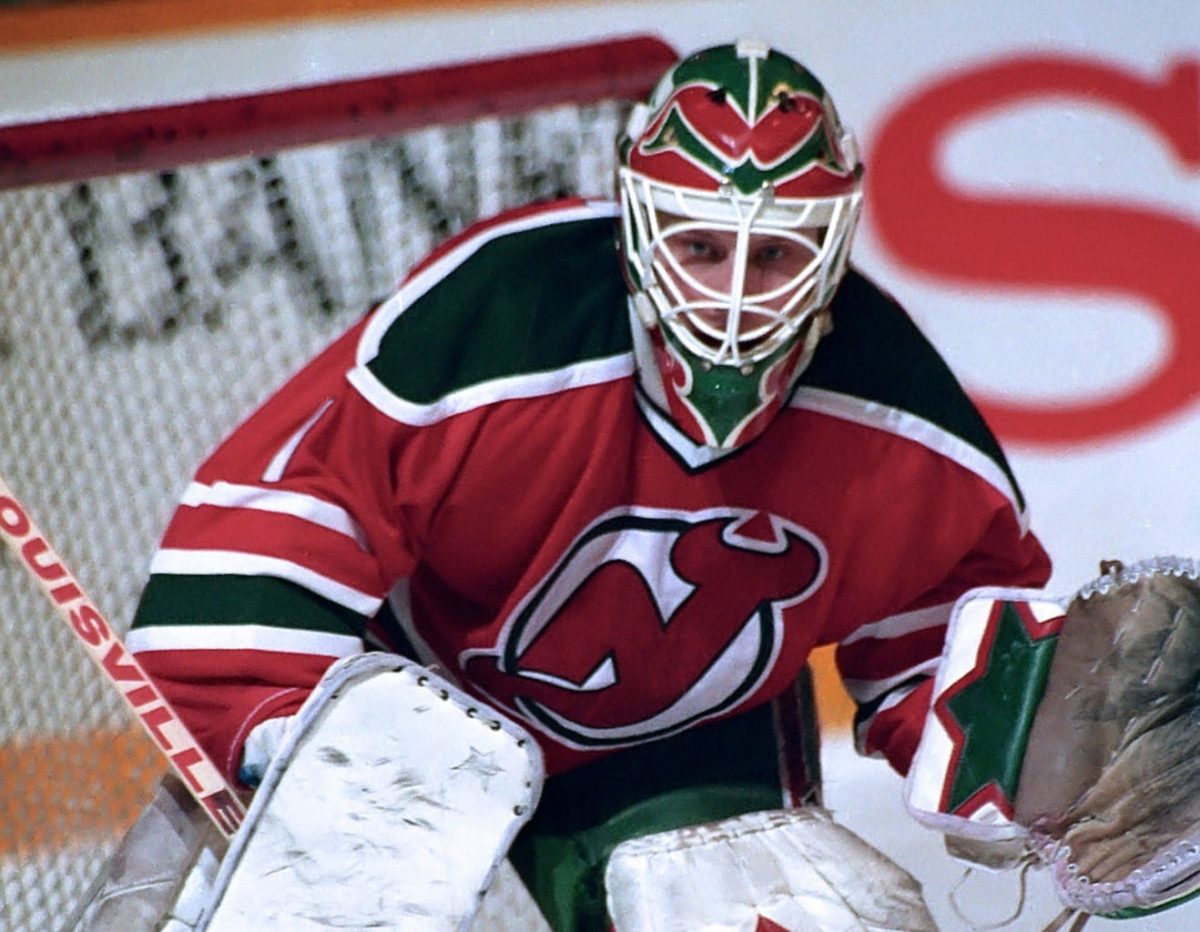
Burke seems like the obvious choice for the Senators, since they have yet to select a goalie, but another player also may catch their eye in John MacLean, who led the Devils in scoring in 1990-91 but had sustained a serious knee injury in the 1991-92 preseason that forced him to miss the entire season. After seeing the Montreal Canadiens expose Shea Weber in 2021, citing a lingering foot problem that could threaten his career, I think New Jersey tries something similar and leaves him exposed, knowing that Ottawa likely doesn’t bite. The Senators, like the Kraken, likely pass on a player with serious injury issues and instead go for Burke, taking a chance that a change of scenery will draw him back to the NHL.
New York Islanders
Protected: (7/3/1) Pierre Turgeon, Ray Ferraro, Derek King, Benoit Hogue, Steve Thomas, Dave Chyzowski, David Volek, Uwe Krupp, Wayne McBean, Jeff Norton, Glenn Healy
Notable Players Available: Mark Fitzpatrick, Tom Kurvers, Jeff Finley, Brad Dalgarno, Jeff Norton, Pat Flatley, Rob DiMaio
The Senators select: Tom Fitzgerald, Right Wing
The team had several disappointing finishes before the 1992 Draft, which gave them several top draft picks. With those, they selected Dave Chyzowski second overall in 1989, Scott Scissons sixth overall in 1990, and Scott Lachance fourth overall in 1991. The team needed to rebuild, and thus, they need to protect their stars of the future. While we know now that both McBean and Chyzowski were busts, hope was high in 1992. That still leaves several talented youngsters available for the Senators, however, and they go with winger Tom Fitzgerald this time.
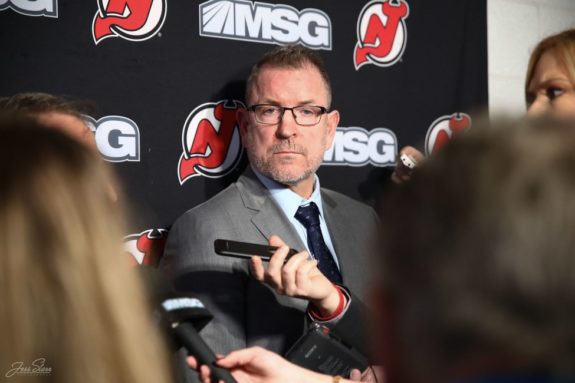
While Fitzgerald would never surpass 34 points in a single season, he proved his worth in other ways that put him on many teams’ radars. In his 17-season career, he suited up for seven different organizations, two of which were expansion teams. He was a well-respected leader throughout his time in the NHL, and he has since gone on to serve as assistant general manager and general manager in both the AHL and NHL.
New York Rangers
Protected: (7/3/1) Mike Gartner, Adam Graves, Mark Messier, Darren Turcotte, Kris King, Paul Broten, Tie Domi, Brian Leetch, James Patrick, Jeff Beukeboom, Mike Richter
Notable Players Available: John Vanbiesbrouck, Jan Erixon, Par Djoos, Rob Zamuner, Jody Hull
The Senators select: John Vanbiesbrouck, Goalie
If allowed to protect just a single goalie, the Rangers would be in a bit of a bind. In 1991-92, they rolled with two capable starters in Vanbiesbrouck and Richter. Vanbiesbrouck was the better of the two, finishing second in the league with a 0.910 save percentage, but Richter was younger and already showing flashes of stardom. So, if push came to shove, I believe the Rangers would have gone with their heir to the throne rather than the one currently holding the title, similar to Marc-Andre Fleury and the Pittsburgh Penguins in 2017.
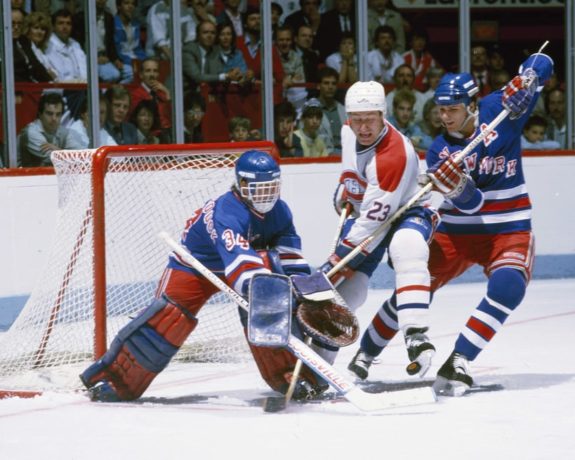
Strangely enough, it’s exactly what the Rangers did two years later, choosing to expose Vanbiesbrouck and protect Richter in the 1994 expansion draft, and the Rangers goalie was taken by the Panthers with the first pick. With him in the crease, the Panthers managed to make the Stanley Cup Final just two seasons later in 1995-96. Having a strong goalie can do a world of good for a weaker team, as the Knights discovered with Marc-Andre Fleury. The Senators can’t pass up a former Vezina Award winner, and pairing him with Burke gives them a surprisingly strong crease.
Philadelphia Flyers
Protected: (8/1) Rod Brind’Amour, Kevin Dineen, Mark Recchi, Wes Walz, Steve Duchesne, Garry Galley, Brian Benning, Kerry Huffman, Ron Hextall
Notable Players Available: Mark Pederson, Dale Kushner, Mark Howe, Pelle Eklund, Dan Quinn, Mark Freer, Terry Carkner
The Senators select: Mark Pederson, Left Wing
The Philadelphia Flyers built up their defence in 1991-92 and would try to protect as many as they reasonably could in this expansion draft. Brian Benning, Steve Duchesne, and Garry Galley were all acquired via trade that season, and at just 23 years old, Kerry Huffman was a promising offensive defender. That leaves just four spots left, and the Flyers only have four forwards they absolutely can’t lose — Rod Brind’Amour, Kevin Dineen, Mark Recchi, and youngster Wes Walz. Despite exposing more players, there are still few options for the Senators, so I went with Mark Pederson, a young sniper who had a great junior career with the WHL’s Medicine Hat Tigers but never could put it all together in the NHL.
Originally a Canadiens’ first-round pick in 1986, Pederson helped the Tigers win two back-to-back Memorial Cups in 1987 and 1988. After scoring just 28 points in his first two NHL seasons, split between the Canadiens and Flyers, he broke out in 1991-92, scoring an amazing 40 points in 58 games. He never repeated those totals, but on a team with nowhere to go but up, he may emerge as a top scorer in the 1990s. That may be a bit of wishful thinking, but most drafts are, so I’m going with it.
Pittsburgh Penguins
Protected: (8/1) Mario Lemieux, Kevin Stevens, Ron Francis, Rick Tocchet, Larry Murphy, Ulf Samuelsson, Jeff Chychrun, Kjell Samuelsson, Tom Barrasso
Notable Players Available: Grant Jennings, Joe Mullen, Paul Stanton, Jan Hridina, Jim Paek, Ken Wregget
The Senators select: Paul Stanton, Defence
As the old saying goes, defence wins championships, and the Pittsburgh Penguins did just that in 1992. Despite being armed with the deadliest offence in the league thanks to Mario Lemieux, they went out and added Jeff Chychrun, Kjell Samuelsson, and Ulf Samuelsson between 1990 and 1992. Those additions helped them claim back-to-back Stanley Cups in 1991 and 1992, and they likely wouldn’t want some expansion team to break up their chance at a three-peat. Yet the Senators still likely go for a defenceman here, selecting 24-year-old Paul Stanton, who scored 23 points in his rookie season and was a decent contributor during their Cup runs. While his career didn’t do much after that, it’s still a chance Ottawa should take to improve their defensive depth.
Quebec Nordiques
Protected: (7/3/1) Joe Sakic, Mike Hough, Claude Lapointe, Stephane Morin, Greg Paslawski, Scott Pearson, Scott Young, Curtis Leschyshyn, Craig Wolanin, Steven Finn, Stephane Fiset
Notable Players Available: Tony Twist, Randy Velischek, Herb Raglan, Jamie Baker, Marc Fortier, Doug Crossman
The Senators select: Herb Raglan, Right Wing
With Mats Sundin, Owen Nolan, Valeri Kamensky, Martin Rucinsky, Alexei Gusarov, and Adam Foote all first or second-year pros, the Quebec Nordiques have little to lose with a re-do draft. While that’s great for the Nordiques, it doesn’t help the Senators at all. Their best is likely Herb Raglan, a 25-year-old hard-nosed winger who put up 20 points in 62 games the season prior. Ironically, the Senators ended up with three former Nordiques in their inaugural season in Jamie Baker, Doug Smail, and Marc Fortier. Baker was solid, scoring 48 points and sat second in team scoring, but none stuck around for more than a single season.
St. Louis Blues
Protected: (7/3/1) Brett Hull, Brendan Shanahan, Ron Sutter, Craig Janney, Nelson Emerson, Dave Christian, Bob Bassen, Jeff Brown, Stephane Quintal, Murray Baron, Curtis Joseph
Notable Players Available: Guy Hebert, Dave Lowry, Rich Sutter, Kelly Chase, Garth Butcher, Rick Zombo
The Senators select: Garth Butcher, Defence
The St. Louis Blues made some major moves in 1991-92, sending away star Adam Oates to the Bruins for Craig Janney and 1987 first-round pick Stephane Quintal. They then acquired Murray Baron and Ron Sutter from the Philadelphia Flyers for Rod Brind’Amour and Dan Quinn. These moves are not looked back on fondly, especially the Brind’Amour trade, as he was just three seasons removed from being the ninth overall selection. But the Blues wanted to get bigger and tougher, specifically on defence, possibly to fill in for the recently-departed Scott Stevens, which did not occur on the Blues’ terms. Thus, the additions of Quintal and Baron, who were both 6-foot-3 and well over 200 pounds, and almost certainly expected to be major parts of a future playoff run.
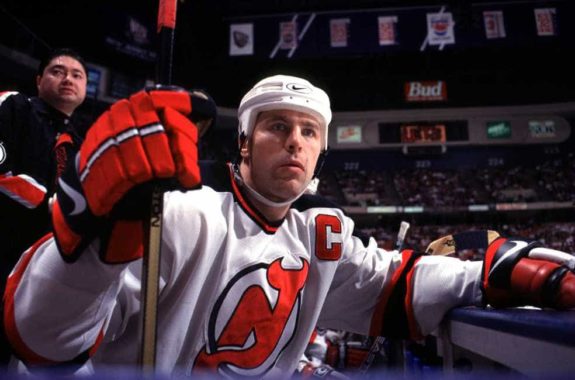
However, the plan never worked out as no one was really on par with Stevens in the 1990s, and both the arbitration ruling and the bad trades set the franchise back several years. It may seem odd that they then expose their current captain, Garth Butcher, but weirder things have happened in expansion drafts, namely the Canadiens exposing Carey Price to the Kraken. While Seattle passed on the all-star goalie due to salary concerns, the Senators would have no such problems in 1992, so they take Butcher. At 28 years old, he adds another veteran presence to the blue line that will hopefully set the team up for future success as the young players coming in have plenty of leaders to learn from.
Toronto Maple Leafs
Protected: (8/1) Doug Gilmour Wendel Clark, Glenn Anderson, Peter Zezel, Dave Ellett, Bob Rouse, Todd Gill, Jamie Macoun, Grant Fuhr
Notable Players Available: Brian Bradley, Mike Foligno, Mike Krushelnyski, Darryl Shannon, Rick Nattress, Rick Wamsley
The Senators select: Brian Bradley, Center
The Maple Leafs practically robbed the Flames in the Doug Gilmour trade, leaving Calgary with many spare parts for a player who hit 100+ points in 1992-93 and 1993-94. However, they wouldn’t be able to protect them all if forced to adhere to the 2017/2021 expansion rules, especially since they didn’t even have to expose any defensemen in 1992. However, as Nattress would become a free agent at the end of the 1992 season, Toronto has a slightly easier decision to make here, and they likely protect Macoun along with three other defenders. That leaves just four forwards to protect, but as the team struggled to score, they don’t have to worry about exposing too much talent. The one player that likely catches the Senators’ eye is the one that also caught the Lightning’s eye in 1992 — Brian Bradley.
To be fair to the Senators, Bradley wasn’t an overly attractive option at the time. He had just 31 points as the second-line center on a bad Maple Leafs team. The Lightning could never have guessed that the 26-year-old would lead their team in scoring with 42 goals and 86 points when they used the 36th pick of the draft to grab him. But in our re-do, he’s still likely Toronto’s best available player, and he had a decent track record of scoring goals. With the Senators currently possessing a lot of unknown talent and defensive-minded forwards, adding the Maple Leafs’ center is a more reliable option.
Vancouver Canucks
Protected: (8/1) Trevor Linden, Cliff Ronning, Greg Adams, Geoff Courtnall, Jyrki Lumme, Adrien Pavsic, Gerald Diduck, Dana Murzyn, Kirk McLean
Notable Players Available: Igor Larionov, Sergio Momesso, Jim Sandlak, Dave Babych, Doug Lidster, Robert Dirk
The Senators select: Igor Larionov, Center
Like the Devils, the Vancouver Canucks were having issues with one of their stars during the 1992 off-season. Igor Larionov emerged as the team’s top-line center in his three seasons with the team and needed a new deal for the 1992-93 season. However, the Russian sports’ agency body, Sovintersport, would receive part of his earnings, as was agreed upon when he and several other young Soviet stars signed in the NHL in the late 1980s. Instead of continuing to support an organization he was growing increasingly frustrated with, Larionov decided to play in Switzerland instead. The Canucks didn’t want to deal with those issues, so they placed him on waivers, where the Sharks picked him. Larionov returned the following season to play in San Jose in 1993-94.
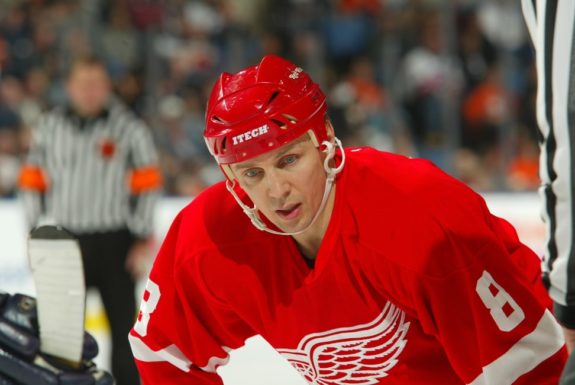
Because of how the draft worked, the Canucks didn’t have to expose him. But in our re-do, Larionov would almost certainly be left for the Senators to grab, akin to the strategy employed by the Colorado Avalanche in exposing free agent Gabriel Landeskog. While the latter was more of a strategy — he re-signed on day one of free agency — the 1992 Canucks were seemingly finished with their enigmatic star, which allows the Senators to grab a face of the franchise who could potentially help mentor a young Alexei Yashin, much like Larionov did for Pavel Bure in Vancouver.
Washington Capitals
Protected: (7/3/1) Michal Pivonka, Dale Hunter, Dino Ciccarelli, Mike Ridley, Randy Burridge, Kelly Miller, Todd Krygier, Calle Johansson, Kevin Hatcher, Al Iafrate, Don Beaupre
Notable Players Available: Jim Hrivnak, Nick Kypreos, Sylvain Côté, John Druce, Tim Taylor
The Senators Select: Sylvain Côté, Defence
It’s been mentioned a few times that in 1992, several teams tried to exploit loopholes to keep as many players as possible. However, no move was more egregious than the Washington Capitals, who wanted to protect both Don Beaupre and Jim Hrivnak but didn’t want to have to expose Olaf Kolzig, who was just a second-year pro but could fulfill the experience requirement, much like Hasek would have with the Blackhawks. So, they decided to sign Bernie Wolfe, a free agent who fulfilled the Capitals’ experience requirement. However, that experience last came in 1979, and he hadn’t played a game since. The NHL didn’t let them get away with that, however, and vetoed the move, so Washington instead signed Steve Weeks, whose experience was much more recent.
With the changed rules, the Capitals have some more difficult decisions to make than with their goalies, specifically whether they keep together their young defence corps or their deep offensive lines. I decided that their offence was too strong to risk breaking up, which leaves 25-year-old defenseman Sylvain Côté available for the Senators to grab. He hit 40 points in 1991-92 and went on to score at least 50 points in the next two seasons. With Ottawa still lacking a defenceman late into the draft, getting Cote is a huge boost to a weaker defence corps.
Winnipeg Jets
Protected: (7/3/1) Ed Olczyk, Darrin Shannon, Thomas Steen, Pat Elynuik, Troy Murray, Mike Eagles, Luciano Borsato, Phil Housley, Teppo Numminen, Fredrik Olausson, Bob Essensa
Notable Players Available: Mike Lalor, Doug Evans, Danton Cole, Randy Carlyle
The Senators select: Danton Cole, Right Wing
Our last team likely has the least to offer the Senators, thanks to a young core and a top-heavy roster. Protecting 11 total players leaves few options, so Ottawa goes for the 24-year-old Danton Cole, who only had a few NHL seasons under his belt and a career-high of 24 points in 1990-91. While he wasn’t exposed for the 1992 expansion draft, the Jets did end up trading him to the Lightning afterward for practically nothing, and he had a breakout season in 1992-93, scoring 21 goals and 43 points in 81 games. He never hit double digits in points again, but the Senators can hope to catch lightning in a bottle, so to say.
Final Roster
Goalies: John VanBiesbrouck, Sean Burke
Defensemen: Lyle Odelein (RHD), Sylvain Côté (RHD), Garth Butcher (RHD), Paul Stanton (RHD), Bill Houlder (LHD), Charlie Huddy (LHD)
Forwards: Igor Larionov (C), Neal Broten (C), Bob Sweeney (C), Terry Yake (C), Brian Bradley (C), Kelly Buchberger (RW), Herb Raglan (RW), Danton Cole (RW), Tom Fitzgerald (RW), Craig Berube (LW), Gerard Gallant (LW), Mark Pederson (LW), Jocelyn Lemieux (LW)
Are the Senators Better?
The short answer is yes. The 1992-93 Senators were one of the worst teams in the last 30 years, and almost anything different would have made them better. But as to whether they are a playoff team is a different question and one not so easily answered. Their goaltending is as strong as any other team, a stark contrast from their 1992 roster, but the rest of the players available are mostly third or fourth-liners. Their defence is decent, as well, but beyond Odelien, it doesn’t offer any real upside; who they are is about as good as they’ll get.
But compared to the Golden Knights or even the Kraken, this team pales in comparison. Larionov is easily the biggest star, but even if they were able to select him — which I realize is a long shot — there’s no guarantee he joins an expansion team. The same goes for backup Sean Burke; would he sign with a team only to have his minutes cut drastically?
Latest Senators Content:
- Senators Have No Easy Solutions to Their Goaltending Problem
- Senators’ Latest Front Office Moves Hints at What’s to Come
- Projected Lineups for the Senators vs. Panthers – 04/09/24
- Projected Lineups for the Senators vs. Capitals – 04/07/24
- Ottawa Senators’ Best All-Time
Revisionist history is always a tricky exercise. While I tried my best to avoid it, I still know how all these players turned out, and it was inevitable that I avoided younger players who had short or streaky careers. The 1992 Senators had to make their best guess with the limited information they had, and it’s impossible to accurately recreate, even if you spend months researching and writing an article about it.
In the end, it’s all for fun, and at the very least, gives a neat perspective of how things could have worked out. But what do you think? Could you make a better team from my lists, or even create better lists? Leave your answer in the comments!